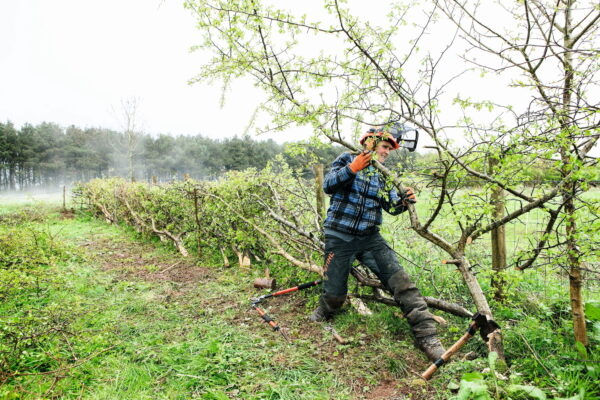The modern hedgelayer’s role is no longer that of a fencer, but instead a practical conservationist creating vibrant, thorny arteries of hedgerow habitat, says Richard Negus.
It is impossible to say precisely when the first hedge in Britain was laid, yet it is beyond doubt that our hedgerows are the oldest in Europe. This truth came to light in the early 1980s, when archaeologist Francis Pryor and a team from Cambridge unearthed the traces of a hedged-in sheep fold and livestock market in the stark peatlands of Flag Fen near Peterborough, Cambridgeshire. A nondescript piece of blackened hedgerow brash was exposed, visibly clean cut and angled, indicative of trimming with, one supposes, a billhook.
When radiocarbon-dated, this barb helped to prove that some 4,500 years ago, people here were already well established in agricultural practices familiar to us today — mixed farming, draining land and managing hedgerows. It stands to reason, then, that if the hedge was integral to this proto-agricultural Bronze Age landscape, then so too were hedgelayers.


